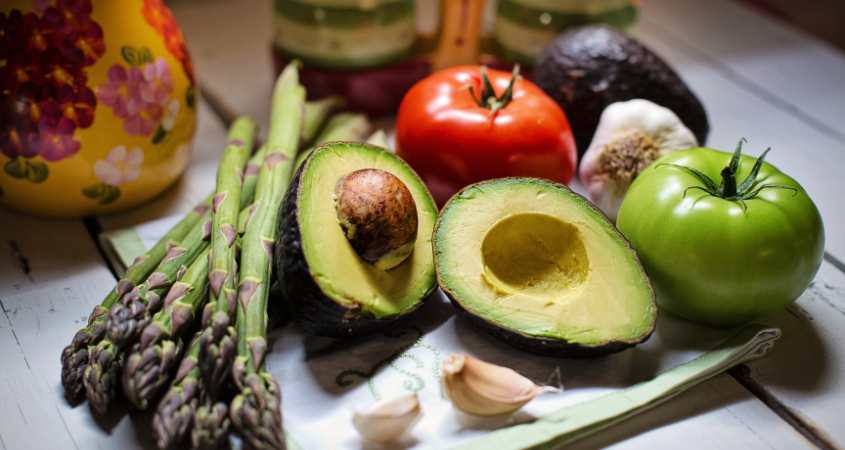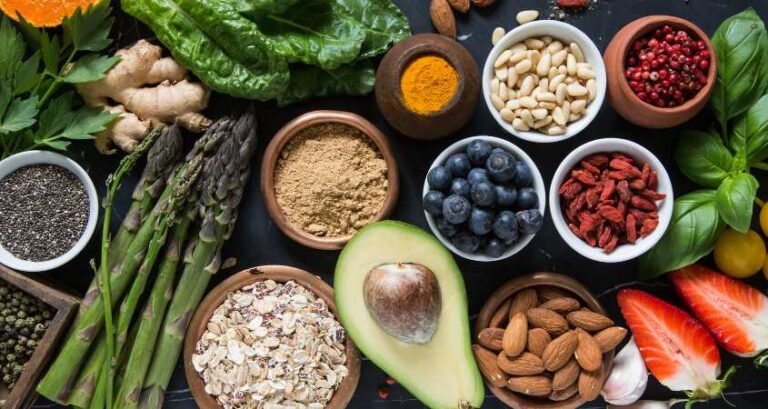You’ve heard it before: “You are what you eat.” But do you really know what that means? When most people talk about food, they’re referring to the nutrients it contains. Nutrients are the building blocks of life and include proteins, carbohydrates, fiber, vitamins and minerals. The health benefits of certain foods come from these nutrients, which can help keep your body running smoothly and efficiently.
Proteins

Proteins are made up of amino acids, which are the building blocks of proteins. Protein is needed for growth and repair of body tissues, but it has other important functions as well:
- Protein can help you feel full even when you’ve eaten only a small amount of food. This may be because there’s more water in your stomach when you’re consuming protein than when eating carbohydrates or fat (which don’t have as much water).
- Protein helps keep your immune system strong so that it doesn’t get fatigued from fighting off infections or harmful toxins in the environment around us every day and this can help prevent disease!
Carbohydrates

Carbohydrates are a type of nutrient that your body uses for energy. They come in two forms: simple and complex. Simple carbohydrates include sugar and high fructose corn syrup, while complex carbohydrates include whole grains, legumes (beans) and starchy vegetables like potatoes or corn.
Carbohydrates are essential to life because they provide the fuel your brain needs to function properly. They also help keep you full longer than fats do; this means you can eat less when eating carbs compared with fats due to their satiating effect on hunger pangs!
Fiber

Fiber is a carbohydrate that can be found in plant foods. It is not digested in the small intestine and doesn’t pass through to your large intestine. However, fiber can play a role in maintaining regular bowel movements by keeping your digestive system moving along smoothly.
Fiber helps with keeping you feeling full longer, which makes it easier to avoid overeating or snacking on unhealthy food choices. Fiber also promotes healthy blood sugar levels and helps prevent heart disease by lowering cholesterol levels and promoting blood flow to the digestive tract (which lowers risk of heart attack).
Vitamins
Vitamins are essential nutrients that help your body make energy, stay healthy and function properly. They’re found in a variety of foods, but the body can’t make vitamins on its own. Some vitamins come from food sources (such as fruits, vegetables and whole grains), while others are created by plants or animals through certain metabolic processes.

Vitamins also include minerals like calcium and magnesium; these minerals help build strong bones and teeth.
The best way to get enough vitamins is by eating a balanced diet one that contains plenty of fruits, vegetables and whole grain products such as breads or cereals with bran added as well as other nutritious foods such as fish oil supplements or fortified breakfast cereals with added vitamin D.”
Minerals

Minerals are inorganic substances that your body needs to function properly. They help your body’s organs and muscles carry out their functions, and they also help blood clot properly.
The most important minerals are calcium, iron and zinc. Calcium helps promote strong bones, while iron is needed for energy production in all cells of the body (including red blood cells). Zinc plays an important role in wound healing and cell division among other things so it’s no wonder this mineral is considered an essential nutrient!
Good Fats and Bad Fats
Good fats are monounsaturated and polyunsaturated. Bad fats are saturated, trans fats (found in processed foods), and cholesterol.
Saturated fat is found in animal products like meat, dairy, and eggs; it raises your LDL (“bad”) cholesterol when eaten alone or in excess amounts. Trans fat comes from partially hydrogenated oils used in frying foods at high temperatures it’s also found in margarine spreads like margarine-style stick margarines.
Food Basics
Knowing the food basics will help you understand how foods operate in your body. Food is made up of different combinations of protein, carbohydrate and fat—the building blocks of all foods. As a result, every food has one or more nutrient groups that it contains (e.g., vitamins, minerals), as well as other chemicals called phytochemicals that contribute to its health benefits.

Proteins: Proteins are made up of amino acids; they’re essential nutrients because they build and repair tissues throughout our bodies. They also play roles in keeping us strong and healthy by helping us fight infections like the flu or making antibodies against foreign substances such as bacteria or viruses all while providing energy for physical activity!
Carbs: Carbohydrates provide our bodies with energy through digestion into glucose molecules (also known as “carbs”), which can then be used by cells throughout our bodies’ nervous system system during times when we need quick bursts of energy instead consuming calories directly from fats stored within adipose tissue under skin folds on arms/legs etc. Carbohydrates also help keep our bodies healthy by providing the brain with glucose, which it needs to function properly. Without enough carbs in our diets we can become lethargic and experience mood swings due to a shortage of energy.
Fats: Fat is an essential nutrient that helps your body absorb vitamins A, D, E, K as well as other fat-soluble nutrients. It also plays an important role in maintaining overall health by assisting with metabolism and hormone production.
Conclusion
Food is a powerful tool, so it’s important to understand the basics. The next time you go grocery shopping, take some time to learn about food types and all of their nutritional benefits. It will make you more informed when making choices at the supermarket and also help you understand what your body needs in order to function properly.
For more info Visit Us




